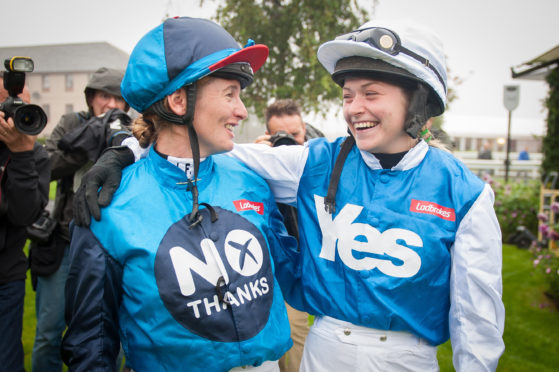
It was not, perhaps, David Cameron’s biggest referendum- related mistake but, according to experts, it was still a doozy.
When the then-Prime Minister allowed Alex Salmond to compile the first draft of the 2014 independence referendum question, experts believed he handed his opponents a boost based on the “power of yes”.
While the SNP had to modify their first choice of wording – “Do you agree that Scotland should be come an independent country?” – on the recommendation of the Electoral Commission, the amended “Should Scotland be an independent country?” still gave them the positive, upbeat answer leaving their opponents with the more negative, denial of no.
Last week, the Electoral Commission said it must rule on any question in any future vote with no guarantee the 2014 wording could simply be repeated.
Stephen Reicher, professor of social psychology at St Andrews University, said offering simple “yes” or “no” responses to a question could influence how people answer – but only in certain circumstances.
He said: “When the issue is new or unclear, even subtle variations may have a big influence because they are cues to what response is most acceptable.
“If ‘no’ becomes emblematic of the negativity of one side – as in ‘they are doomsayers’, ‘it’s Project Fear’ etc – it can have an effect.
“It makes particular arguments and issues salient when people go into the ballot box and there is much evidence to show that it is which issues you manage to make salient which is critical to polling outcomes – whether referenda or elections.
“There is a powerful psychological theory called ‘prospect theory’ which shows that when one is decision-making under uncertainty – which we are in an independence referendum since no one can be sure about the consequences – then the way things are framed is critical.
“People will not take risks to get a possible gain, but they will take risks to avoid a probable loss.
“In many ways the advance of the ‘Yes’ side in the last Indyref was because the SNP learnt to reframe the risks accordingly.
“At the start they were put on the back foot by the ‘No’ campaign emphasising all the inevitable disruption and difficulties in search of a possible promised land.
“Later they emphasised the inevitable losses of staying in the UK – such as cuts to the NHS – unless we take a chance on independence. The shift from the first to the second debate was very clear in this regard.”
Dr Alan Renwick, of the Constitution Unit at University College London, agreed that a Yes/No question could influence a result – but only if people didn’t already have a strong opinion.
He said: “There is evidence that, in some circumstances, people show what’s called acquiescence bias – they are more likely to say ‘Yes’ to a question than ‘No’.”
Psychologists say most people simply want to agree with what someone else is saying to them.
“It’s much more likely where people haven’t thought about the issue before and don’t have strong views. There’s no evidence that people continue to show acquiescence bias on important questions that they have thought about a lot.”
But he said people were so used to the ‘Yes’ and ‘No’ campaigns for and against Scottish independence that changing the question could cause confusion.
Dr Renwick said: “The Electoral Commission recommended against a Yes/No question for the Brexit referendum because it found that some people were confused by the Yes/No question on the particular issue of EU membership, as they weren’t sure whether the UK was in the EU or not.
“My hunch is that, if another Scottish independence referendum was called with the same question as in 2014, the Electoral Commission would probably approve that question without changes, even though it is a Yes/No question.”
Meanwhile, referendum expert Matt Qvortrup, professor of political science at Coventry University, who has carried out his own research on the issue, believes the wording of the question is unimportant.
He said: “What I did find is that if the question is a short one people are more likely to vote yes.”

Enjoy the convenience of having The Sunday Post delivered as a digital ePaper straight to your smartphone, tablet or computer.
Subscribe for only £5.49 a month and enjoy all the benefits of the printed paper as a digital replica.
Subscribe